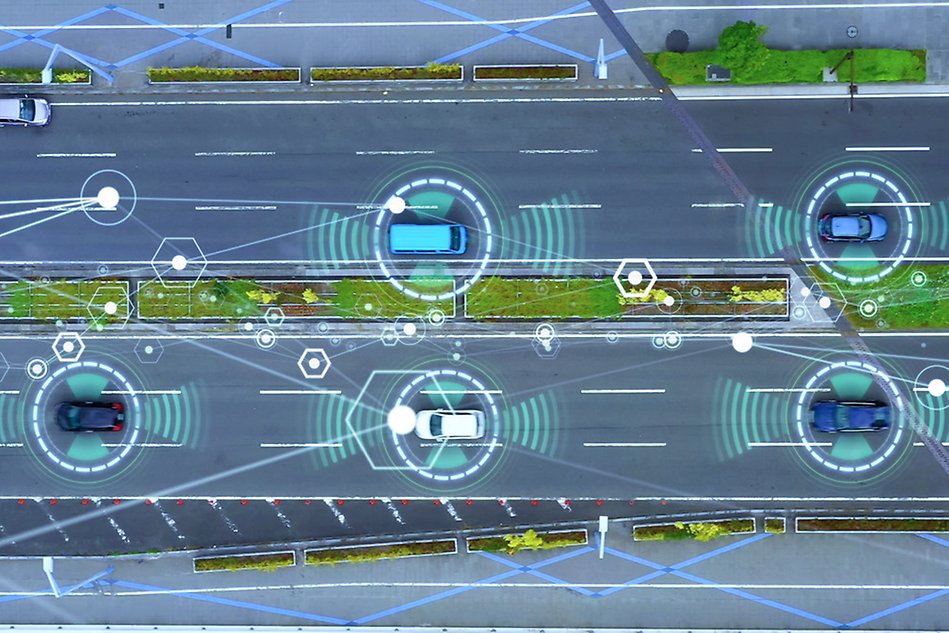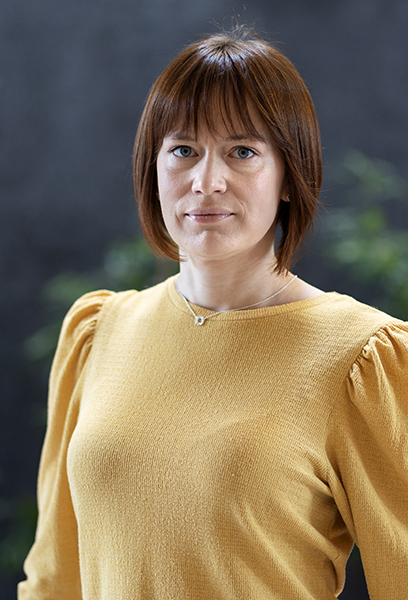Solving traffic challenges with communicating cars
Hi there Galina Sidorenko! On 28 March, you defended your doctoral dissertation. We wrote about your licentiate thesis on enhancing road safety through wireless communication a few years ago. This is also referred to as vehicle-to-everything or V2X. Can you tell us what’s new in your research since then?

“I developed a framework that allows cooperative vehicles to make the best decision in the case of a potential accident.”
Galina Sidorenko
“I worked further on my research on safety requirements for highly automated cars. During this exploration, I improved and generalised the widely known Responsibility-Sensitive Safety (RSS) model for longitudinal driving, in other words, vehicles that drive in a row. This model uses math to determine a safe distance to avoid rear-end collisions. RSS has become the backbone of Mobileye’s driving policy, and it is a globally recognised company in the automotive industry owned by Intel. Mobileye’s technologies are deployed in over 65 million vehicles worldwide.”
How can cooperative vehicle technology and wireless communication help in case of accidents?
“According to the most optimistic assessments, up to 90 per cent of traffic accidents can be eliminated by autonomous vehicles. Thus, some accidents still may occur. I developed a framework that allows cooperative vehicles to make the best decision in the case of a potential accident. In other words, to determine the best course of action in the accident to, for example, minimise overall harm or redistribute it among all involved actors fairly. This becomes possible if vehicles communicate and cooperate with each other using V2X communication.”
“Imagine an example of three autonomous vehicles driving along the road. These vehicles may vary in terms of the number of passengers they carry. If a pedestrian suddenly enters the road, the first vehicle must stop abruptly to avoid hitting the person. A crash might be unavoidable if the distances between these three vehicles are not long enough. In such a case, the vehicles can cooperate to find the best course of action and save the most people. In other words, my framework, called ‘ethical V2X’, helps decide how the crash should occur to meet formalised ethical criteria.”

On March 28, Galina Sidorenko defended her doctoral thesis “Cooperative Automated Driving for Enhanced Safety and Ethical Decision-Making” which is a part of the SafeSmart project.
Have any results surprised you?
“One surprising finding is the significant impact of cooperation among vehicles on overall safety. When autonomous vehicles communicate through V2X communication and coordinate their actions, they can effectively prevent rear-end collisions or mitigate their consequences by ethical considerations. All this will lead to enhanced road safety and improved traffic flow.”
What do you hope your research will lead to?
“I hope my research can help to increase societal acceptance of autonomous vehicles and accelerate their deployment on our public roads. It can catalyse commercialisation of automated and autonomous systems in the vehicle industry.”
Soon, you will have defended your doctoral thesis. What does it mean to you?
“My thesis represents the culmination of many years of hard work, dedication, and perseverance. It has been an incredibly rewarding journey filled with challenges and achievements, and ultimately, I am proud of my contributions to my research field.”
Text: Anna-Frida Agardson
Picture: iStock
Portrait Picture: Anna-Frida Agardson
About the doctoral defence
The dissertation took place on March 28, 2024.
Thesis title:
Cooperative Automated Driving for Enhanced Safety and Ethical Decision-Making External link.
External link.
Chair of the defense:
Professor Mark Dougherty, Halmstad Univesrity
Opponent:
Professor, Jérôme Härri, Eurocom
Examination board:
Professor, Elisabeth Uhlemann, Mälardalen University
Professor, Erik Ström, Chalmers University of Technology
Professor, Nikolaus Pappas, Linköping University
Supervisor:
Professor, Alexey Vinel, Karlsruhe Institute of Technology
Co-supervisor:
Senior Lecturer, Johan Thunberg, Lund University
More information
Research at the School of Information Technology (ITE)
Galina Sidorenko’s doctoral thesis: Cooperative Automated Driving for Enhanced Safety and Ethical Decision-Making External link.
External link.
På svenska
Löser trafikutmaningar med kommunicerande bilar

